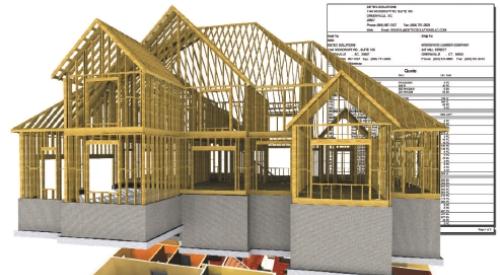Why does it take more than ten years for new technology and new building products to be absorbed into the mainstream of housing? How can builders and building product manufacturers better work together to facilitate the acceptance of new technology and the creation of stronger builder/supplier partnerships?
Those questions were the subject of a day long industry roundtable recently held in Tempe, Arizona, and hosted by Professional Builder and the NAHB Research Center.
Attendees included a half dozen builders -- including representatives from Del Webb Corp., Oakwood Homes, Centex Homes, and The Estridge Group -- and a like number of building product manufacturers.
Builders, according to roundtable participants, are reluctant to try new materials and products in part because they want to know that the product will perform well for their customers over time. Potential future liability is a major concern.
Manufacturers, according to the builders, must fund the learning curve. Here’s some suggestions:
What do manufacturers want in exchange for funding on-site R&D? That’s easy: they want a strategic alliance - a multi-year commitment; more productive "sales" calls; and a closer relationship with the builder’s entire organization, not just purchasing. "Don’t treat us like commodies," said one manufacturer.
Randy Luther, Vice President of Construction Technology for Centex Homes, offered manufacturers these 11 suggestions for the deployment of new building products:
1. Start with a commitment to value.
2. Understand the needs of knowledgeable builders.
3. Understand the relative value that builders give your product.
4. Understand the relative value that consumers give your product in context with other products in the home.
5. It is not the builder’s responsibility to market your product to consumers. "We don’t gain or lose a single sale based on any product or brand name."
6. Include knowledgeable builders in the R&D effort.
7. Develop new products with a specific target price as a primary goal.
8. Stop introducing product solutions without labor solutions.
9. Focus on "Bubba-proof" installation techniques.
10. Essential packaging only.
11. Reinvent your distribution chain.
Centex, Luther notes, now does mostly two year manufacturer agreements.
Manufactures, added Charlie Scott, Vice President of Communications for The Estridge Group, must recognize that there are different levels of partnering depending on the size and sophistication of the home builder.
Picturing the manufacturer/distributor/builder connections as a triangle, Scott traces this evolution through four phases. In Phase I (builders under 100 homes a year), the primary function is product education from distributor to builder. In Phase II (100-200 homes) and III (200-400 homes), the major connection is between the manufacturer and distribution for time and rebate information and, then, marketing and branding.
Only in phase IV is a true strategic alliance reached with a direct builder/manufacturer connection that offers private labeling, full disclosure, long term commitment, and development of new products and markets.
The builders present also strongly supported the concept of installed sales. For builders, installed sales is very appealing because it offers the potential benefits of higher quality installation and, therefore, reduced call backs, reduced labor problems (at least for the builder), fewer vendors involved, faster cycle time, better job-site cleanliness, and reduced job-site damage with fewer vendors involved. It would also inherently facilitate. new product introductions.
Manufacturers were less enthusiastic, fearing installed sales could change their core competencies and unconvinced that builders would pay a sufficient premium for such service.
A better possibility might be the continued development of a relatively new industry player - the super distributor. Most agreed that distributors who merely pass along products and provide no value-added service will become extinct.
Also See:
Roy Diez's Editorial Archives











